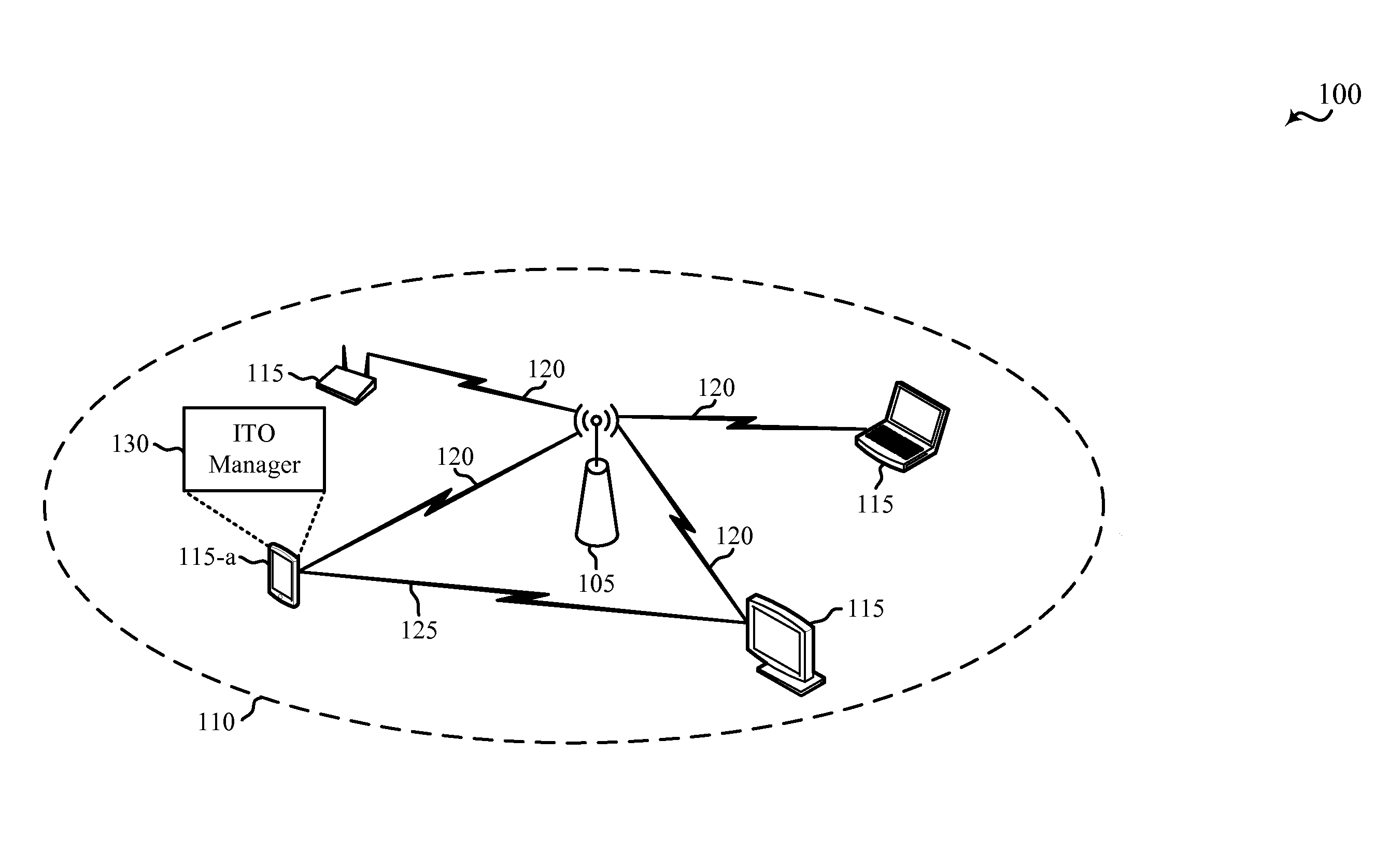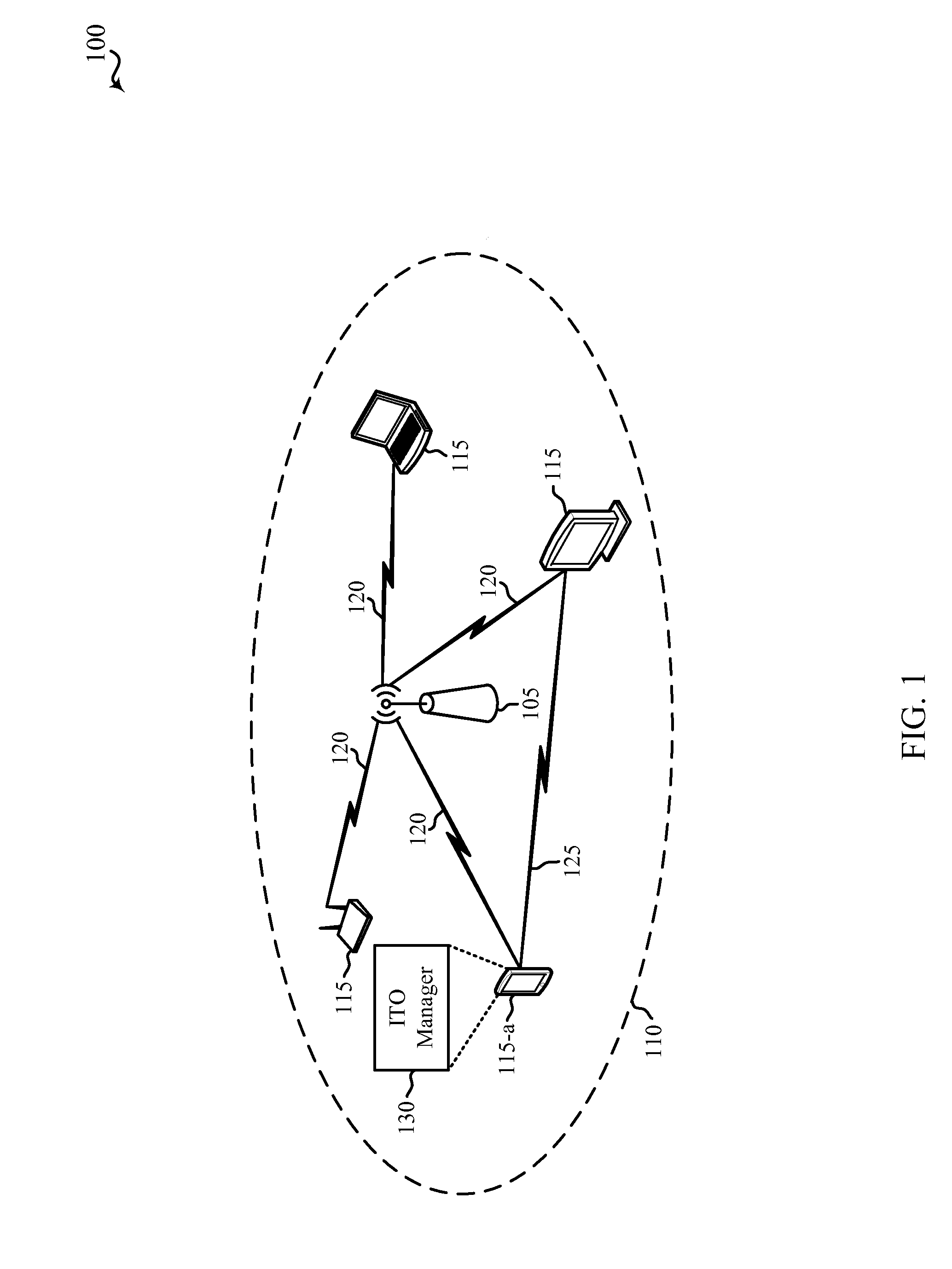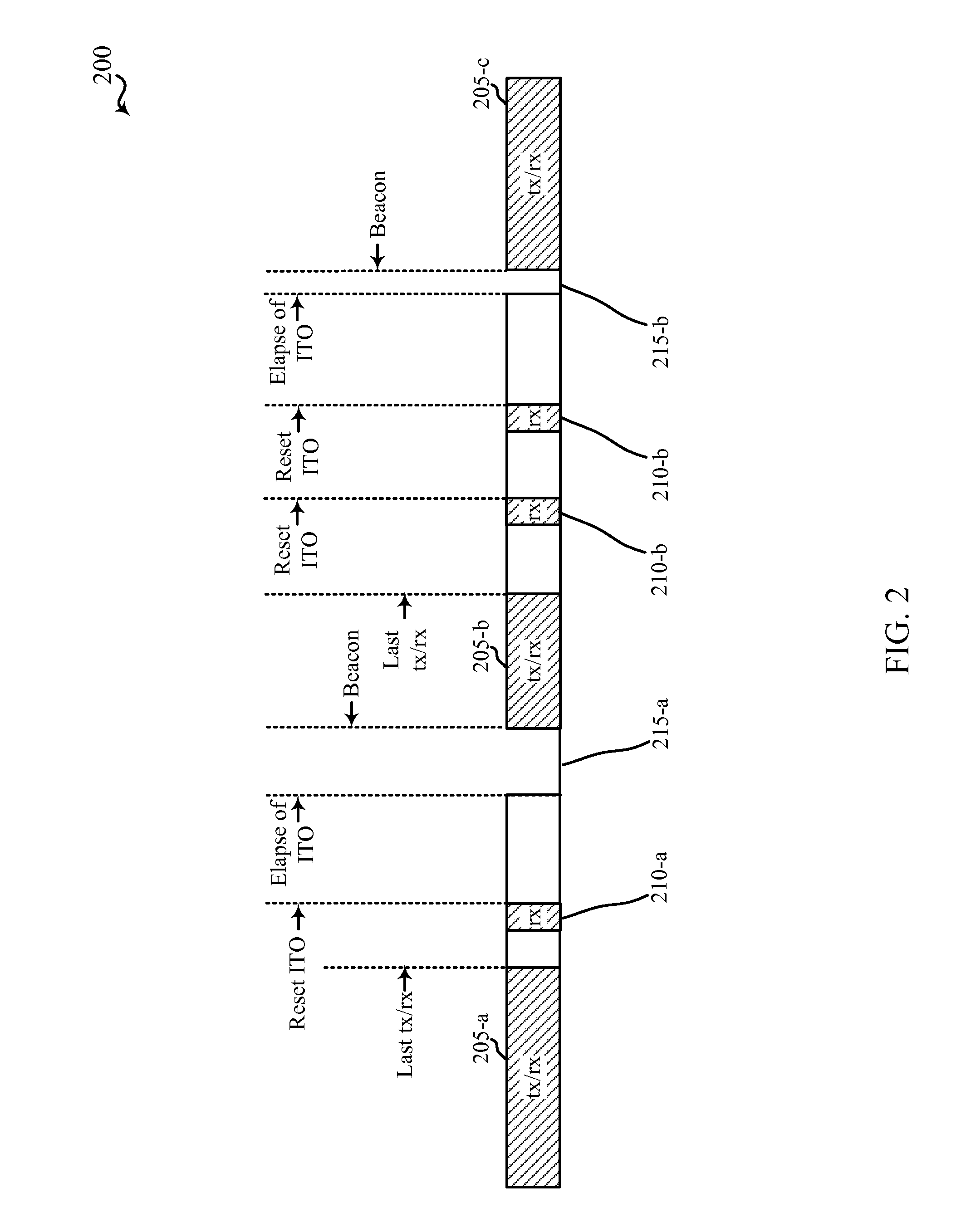Determining inactivity timeout using distributed coordination function
a technology of distributed coordination and timeout, applied in the field of wireless communication, can solve the problems of sacrificing power savings and affecting the determination of packet arrival rate, and achieve the effect of improving power saving and improving power saving for a devi
- Summary
- Abstract
- Description
- Claims
- Application Information
AI Technical Summary
Benefits of technology
Problems solved by technology
Method used
Image
Examples
Embodiment Construction
[0032]The described features generally relate to improved systems, methods, or apparatuses for adaptively setting an inactivity timeout (ITO) for a device, such as a station (STA). Such an approach may avoid drawbacks associated with using a fixed (e.g., preset) ITO. A major contributor to a WLAN STA's power consumption may be time spent in idle-listen mode, which may be determined by a fixed ITO used in all channel conditions. However, when the medium is busy, using a fixed ITO may lead to either unnecessary power consumption by the STA if set too long or decreased performance for the STA if set too short.
[0033]As described herein, the ITO may be set adaptively using DCF information. DCF operations may be tracked to generate historical DCF information. The historical DCF information may be used to obtain, derive, calculate, generate or otherwise determine a channel congestion metric. The ITO may be set using the channel congestion metric. For example, the ITO may be set adaptively ...
PUM
 Login to View More
Login to View More Abstract
Description
Claims
Application Information
 Login to View More
Login to View More - R&D
- Intellectual Property
- Life Sciences
- Materials
- Tech Scout
- Unparalleled Data Quality
- Higher Quality Content
- 60% Fewer Hallucinations
Browse by: Latest US Patents, China's latest patents, Technical Efficacy Thesaurus, Application Domain, Technology Topic, Popular Technical Reports.
© 2025 PatSnap. All rights reserved.Legal|Privacy policy|Modern Slavery Act Transparency Statement|Sitemap|About US| Contact US: help@patsnap.com



